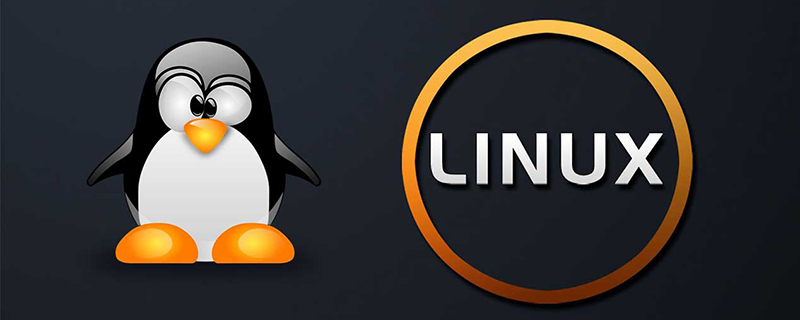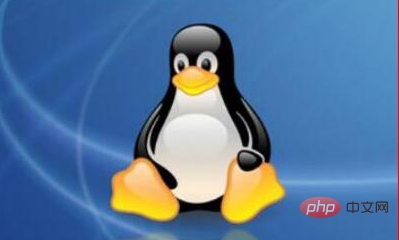 Operation and Maintenance
Operation and Maintenance
 Linux Operation and Maintenance
Linux Operation and Maintenance
 Introduction to the differences between various linux systems
Introduction to the differences between various linux systems
Introduction to the differences between various linux systems

1. Ubuntu
Ubuntu is well known as the best LinuxServerDistro, which can provide you with an excellent user experience.
If you are new to the Linux world, it would be best to choose Ubuntu as your server distribution. Using this server you can do anything like starting a web server, deploying containers, etc.
It is perfect as a media server, email server or game server.
2. CentOS
CentOS is one of the best Linux server distributions used in the world, accounting for 30% of the world's Linux servers. It is a derivative of RedHat EnterpriseLinux and provides a stable server environment.
Recommended video tutorials related to Linux: linux video tutorials
3. Debian
Debian is known as the king of Linux distributions and is currently the most popular Linux server distribution. It was originally launched in 1993. It is the most commonly used Linux server, even Ubuntu is based on Debian.
It provides various package managers, various API tools, etc. You will notice that the server using it is more secure and stable. Now let us see its useful features.
4. OpenSUSELeap
OpenSUSE is one of the most commonly used Linux server operating systems first introduced in 1993.
There are two main variants of OpenSuse, they are Leap and Tumbleweed. OpenSUSELeap is the most stable. This server can be easily used as a web server, home server and both. Versatility features are very useful in any server distribution.

5. Fedora
Fedora is one of the best Linux server distributions, which contains experimental technologies developed for commercial Linux distributions. For users who are new to the Linux world, this is a completely new Linux server operating system. It supports various desktop environments, including Gnome, KDE, etc.
6. RedHatEnterpriseLinux
RedHatEnterpriseLinux is one of the most popular Linux server operating systems, and almost all Linux components and various software can be easily used on it. Additionally, 500 companies worldwide use its services. There are various servers on it, such as production servers, enterprise servers, etc.
7. OracleLinux
OracleLinux is one of the best Linux server distributions.
There are two kernels in Oracle, one is RedHat compatible kernel (RHCK) and the other is RedHat Enterprise Linux (RHEL). Both systems work well with different hardware, such as Lenovo, HP, IBM, etc.
8, Mageia
If you are looking for a safe and stable Linux server, Mageia will be your best choice.
It was first released in 2010 and now it is a fork of Mandriva. Mageia includes some of the best desktop environments such as GNOME, KDE, LXDE and Xfce.
9. ArchLinux
ArchLinux is a more flexible platform and is very popular among users. It is a fully customized Linux distribution that comes with some great features. Administrators can use it to quickly set up server applications as it provides a flexible and stable environment.
10. Slackware
Slackware is a long-standing Linux server distribution that will ensure you stability and simplicity, first released in 1993.
Slackware is a very lightweight Linux server, which is why it mainly uses Pentium systems. Slackware comes with XWindow system, Web server, mail server, C++ and news server.
Recommended related articles and tutorials: linux tutorial
The above is the detailed content of Introduction to the differences between various linux systems. For more information, please follow other related articles on the PHP Chinese website!

Hot AI Tools

Undresser.AI Undress
AI-powered app for creating realistic nude photos

AI Clothes Remover
Online AI tool for removing clothes from photos.

Undress AI Tool
Undress images for free

Clothoff.io
AI clothes remover

AI Hentai Generator
Generate AI Hentai for free.

Hot Article

Hot Tools

Notepad++7.3.1
Easy-to-use and free code editor

SublimeText3 Chinese version
Chinese version, very easy to use

Zend Studio 13.0.1
Powerful PHP integrated development environment

Dreamweaver CS6
Visual web development tools

SublimeText3 Mac version
God-level code editing software (SublimeText3)

Hot Topics
 1377
1377
 52
52
 How to view instance name of oracle
Apr 11, 2025 pm 08:18 PM
How to view instance name of oracle
Apr 11, 2025 pm 08:18 PM
There are three ways to view instance names in Oracle: use the "sqlplus" and "select instance_name from v$instance;" commands on the command line. Use the "show instance_name;" command in SQL*Plus. Check environment variables (ORACLE_SID on Linux) through the operating system's Task Manager, Oracle Enterprise Manager, or through the operating system.
 What is Linux actually good for?
Apr 12, 2025 am 12:20 AM
What is Linux actually good for?
Apr 12, 2025 am 12:20 AM
Linux is suitable for servers, development environments, and embedded systems. 1. As a server operating system, Linux is stable and efficient, and is often used to deploy high-concurrency applications. 2. As a development environment, Linux provides efficient command line tools and package management systems to improve development efficiency. 3. In embedded systems, Linux is lightweight and customizable, suitable for environments with limited resources.
 Using Docker with Linux: A Comprehensive Guide
Apr 12, 2025 am 12:07 AM
Using Docker with Linux: A Comprehensive Guide
Apr 12, 2025 am 12:07 AM
Using Docker on Linux can improve development and deployment efficiency. 1. Install Docker: Use scripts to install Docker on Ubuntu. 2. Verify the installation: Run sudodockerrunhello-world. 3. Basic usage: Create an Nginx container dockerrun-namemy-nginx-p8080:80-dnginx. 4. Advanced usage: Create a custom image, build and run using Dockerfile. 5. Optimization and Best Practices: Follow best practices for writing Dockerfiles using multi-stage builds and DockerCompose.
 How to use oracle after installation
Apr 11, 2025 pm 07:51 PM
How to use oracle after installation
Apr 11, 2025 pm 07:51 PM
After Oracle is installed, you can use the following steps: Create a database instance. Connect to the database. Create a user. Create a table. Insert data. Query data. Export data. Import data.
 How to start apache
Apr 13, 2025 pm 01:06 PM
How to start apache
Apr 13, 2025 pm 01:06 PM
The steps to start Apache are as follows: Install Apache (command: sudo apt-get install apache2 or download it from the official website) Start Apache (Linux: sudo systemctl start apache2; Windows: Right-click the "Apache2.4" service and select "Start") Check whether it has been started (Linux: sudo systemctl status apache2; Windows: Check the status of the "Apache2.4" service in the service manager) Enable boot automatically (optional, Linux: sudo systemctl
 What to do if the apache80 port is occupied
Apr 13, 2025 pm 01:24 PM
What to do if the apache80 port is occupied
Apr 13, 2025 pm 01:24 PM
When the Apache 80 port is occupied, the solution is as follows: find out the process that occupies the port and close it. Check the firewall settings to make sure Apache is not blocked. If the above method does not work, please reconfigure Apache to use a different port. Restart the Apache service.
 How to execute SQL using command window in oracle
Apr 11, 2025 pm 06:36 PM
How to execute SQL using command window in oracle
Apr 11, 2025 pm 06:36 PM
To execute SQL in the Oracle command window: Open the command window. Connect to the database: connect username/password. Enter the SQL statement and press Enter to execute. View the results. Enter exit to exit the command window.
 How to monitor Nginx SSL performance on Debian
Apr 12, 2025 pm 10:18 PM
How to monitor Nginx SSL performance on Debian
Apr 12, 2025 pm 10:18 PM
This article describes how to effectively monitor the SSL performance of Nginx servers on Debian systems. We will use NginxExporter to export Nginx status data to Prometheus and then visually display it through Grafana. Step 1: Configuring Nginx First, we need to enable the stub_status module in the Nginx configuration file to obtain the status information of Nginx. Add the following snippet in your Nginx configuration file (usually located in /etc/nginx/nginx.conf or its include file): location/nginx_status{stub_status



